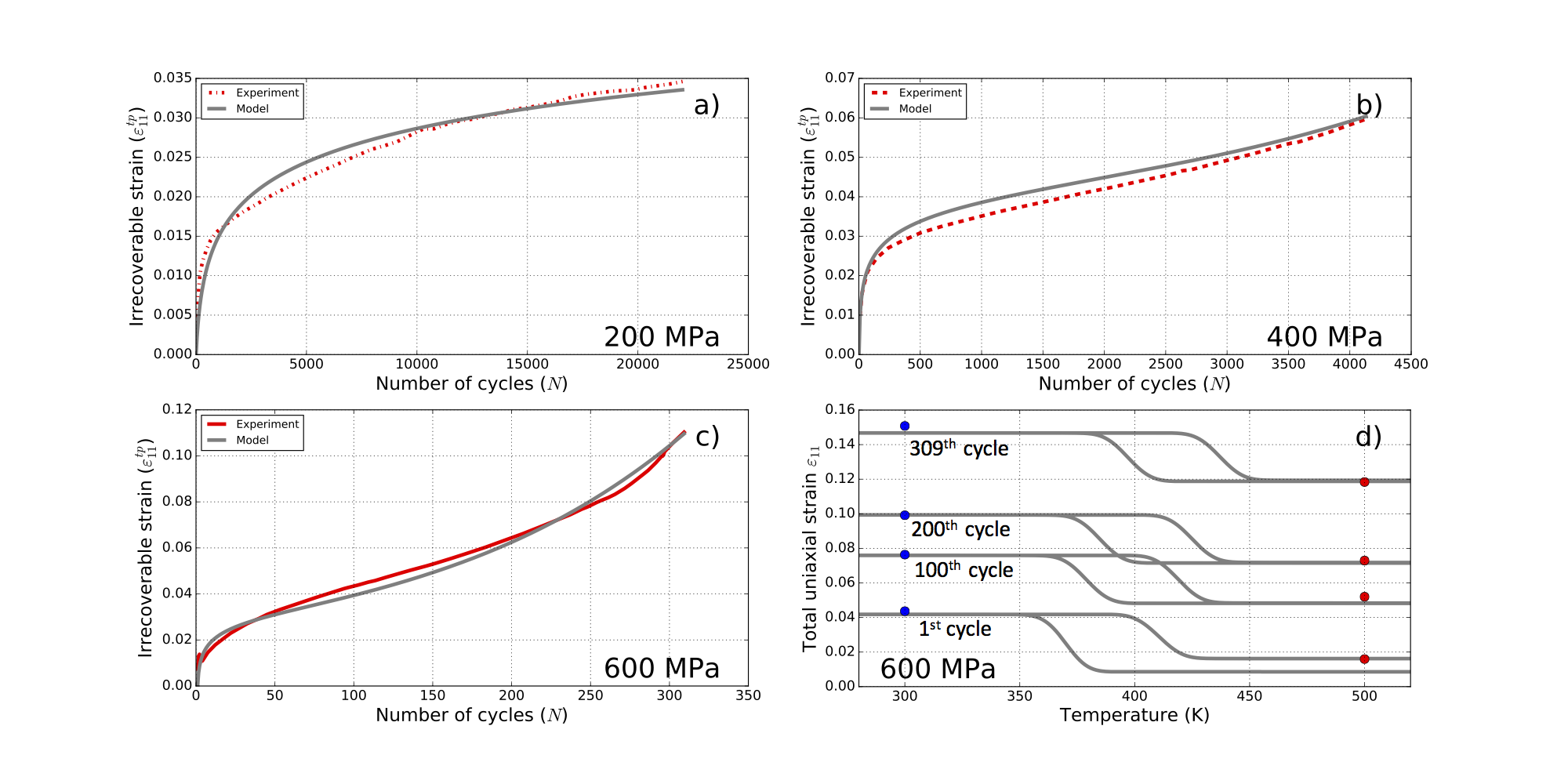Gallery
Functional fatigue analysis of an SMA actuator
Simcoon has been utilized to develop a three dimensional constitutive model for structural and functional fatigue of shape memory alloy actuators. It describes the behavior of shape memory alloy actuators undergoing a large number of cycles leading to the development of internal damage and eventual catastrophic failure. Physical mechanisms such as transformation strain generation and recovery, transformation-induced plasticity, and fatigue damage associated with martensitic phase transformation occurring during cyclic loading are all considered within a thermodynamically consistent framework. Fatigue damage in particular is described utilizing a continuum theory of damage. The total damage growth rate has been formulated as a function of the current stress state and the rate of martensitic transformation such that the magnitude of re- coverable transformation strain and the complete or partial nature of the transformation cycles impact the total cyclic life as per experimental observations. Simulation results from the model developed are compared to uniaxial actuation fatigue tests at different applied stress levels. It is shown that both lifetime and the evolution of irrecoverable strain are accurately predicted by the developed model.

Find more about this work at
Fatigue of SMA actuators in International Journal of Fatigue.
